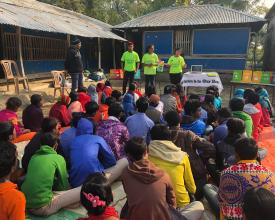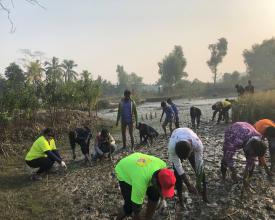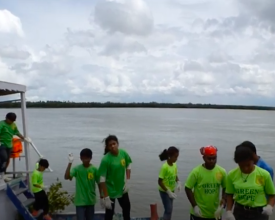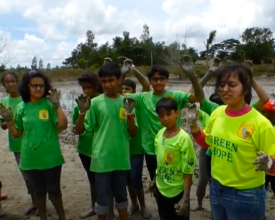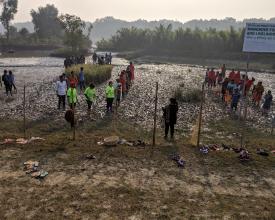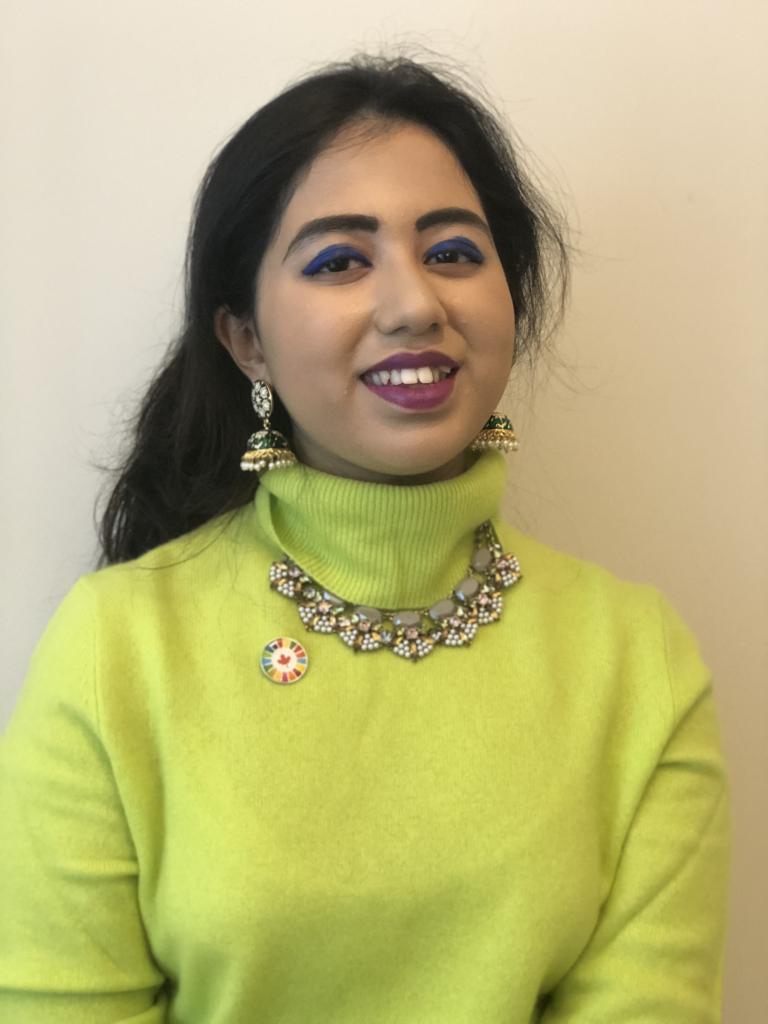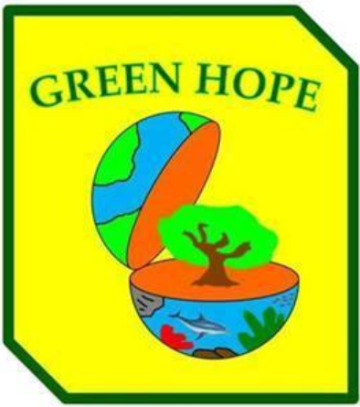
Protecting the mangroves in Sunderbans by empowering local youth
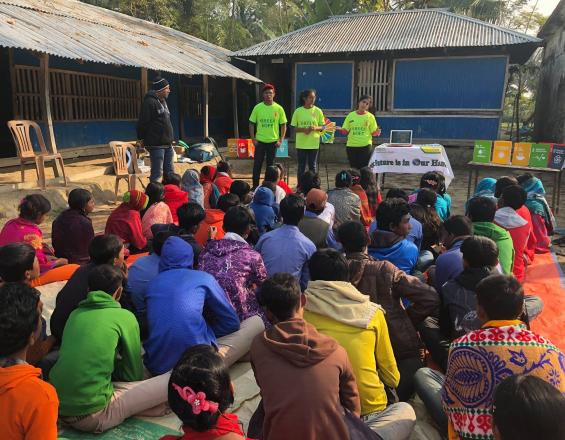
The Sunderbans is the world’s largest mangrove forest spanning territory in Eastern India and Bangladesh. Human encroachment and pollution have caused extensive degradation of these mangrove ecosystems, leaving the coastal communities exposed to nature’s fury. Our project engages the local communities, in Bangladesh as well as in India, by educating and empowering their youth to become stewards who protect their fragile environment through a change in lifestyles. They conduct cleanups, remove litter and plastic, teach households to segregate waste and stop plastic usage. As a community they replant and regenerate mangroves on the islets which have become degraded. The project is building a grassroots bottom up campaign wherein the local community, led by young people, has taken the lead.
Context
Challenges addressed
The rural communities who live in the Sunderbans are economically marginalised. There is a lack of education infrastructure and they had no knowledge about conservation and the damage their lifestyle practices was causing to their mangrove forest habitat. Rampant use of plastics, littering, and deforestation were all combining to deplete the mangroves leaving the residents exposed to sea storms. Two of these storms, Cyclone Aila and Amfan wreaked immense damage amongst these areas. The destruction would have been less had the original mangrove barrier been present.
Location
Process
Summary of the process
Through community partnerships and the use of innovative educational tools, we were successful in bringing about biodiversity consciousness, supplement their traditional practices with modern science and remove harmful consumption practices that were root causes for the degradation of the mangroves.
Building Blocks
Title : Environment Academy – an unique education tool for biodiversity education
Green Hope Foundation uses ESD (Education for Sustainable Development) as a transformative tool to bring about behavioral change in local communities, enabling them to learn about their biodiversity, its current state, what the challenges are and how they can mitigate them. The communities we work with have never been to school. There are also language and social barriers, especially with regard to the participation of girls and women in these conservative societies. To circumvent these challenges we use innovative mediums of learnings, such as Art, Music, Dance and Drama to educate the young people in these communities. Since we are youth, this form of peer to peer learning is more effective.
We utilise the youth of these communities to become the drivers of change mechanism in these communities.
Enabling factors
- Use of innovative learning tools such as Art, Music, Dance and Drama
- Peer to peer communication
- Amplifying the role of young people in the community as change makers
- Promoting the active participation of young women to lead in decisionmaking and implementation in their biodiversity conservation
Lesson learned
These are very traditional and conservative communities. They have been exploited for centuries and this suffering causes them to distrust any form of outside intervention. Our learning was that it takes time to integrate with them, to build trust and thereafter implement our programs. Through this approach, we were able to bring about a transformational behavioral change.
Building community partnerships
Through our relief campaigns and educational programs we built deep partnerships with the local communities. This is critical to achieve our objective of bringing about permanent behavioral change.
Enabling factors
- Open communication
- Building trust
- Relief campaigns to support those impacted by cyclones
Lesson learned
The key takeaway for us to implement a “pilot” project first and build it successfully. This had two benefits :
- We took the learnings from this and scaled up for the other villages
- Word of mouth about the success of the pilot helped to build our credibility within the local communities
Impacts
Our work over the last 4 years has engaged over 9000 young people in 10 villages in the forests of Sunderbans, in both Bangladesh and India. In these villages, there is no plastic trash anymore. Over 6000 mangroves have been replanted in this period, across three barren island sites. Through a continuous training and conservation education, the residents of these villages have learnt to live symbiotically with the mangroves rainforests.
Beneficiaries
Our work over the last 4 years has engaged over 9000 young people in 10 villages in the forests of Sunderbans, in both Bangladesh and India. In these villages, there is no plastic trash anymore.
Sustainable Development Goals
Story
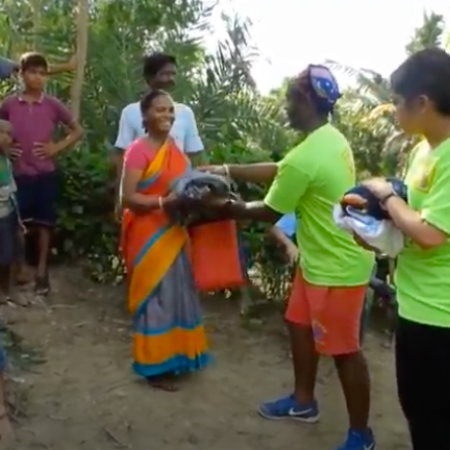
I still remember our first journey into the Sunderbans, at the start of our project. From the capital Dhaka it took us almost a day – first by car, then by boat winding through the narrow rivulets that got narrower until we reached one of the villages. From there we walked or hitched a ride on a bullock cart, to move between villages. The region is so remote that it is largely cut off from development and that, we found, to be one of main reasons for its state of degradation. The local population is literally fending for itself. What surprised us the most is that even though they were cut off from the main cities, the mangroves and rivulets were choking on all kinds of plastic. The tide had washed much of these plastics, of different hues and shapes, from the cities into these mangroves, choking and killing them. This was the first activity that we embarked upon – educating the youth on the irreversible damage caused by the plastics and thereafter organising regular, scheduled cleanups that are continuing even today. Until we stop this at the source, in the cities, the mangroves and other riverine and marine ecosystems will continue to, sadly, bear the consequences.
During the first phase of our project, we focussed on a village that had been completely destroyed by Cyclone Aila. The village residents had lost all their belongings and the only clothes they had was what they were wearing. We organised a relief campaign for this village providing them with clothes , sanitary products for the women as well as food rations. It was a very moving moment for us and helped to built trust with the local population. This enabled us to obtain their full support to deliver our education programs to their children and turned the tide in our conservation efforts.
Building on this trust, we instituted our “ambassador” program where a group of youth from each village was trained to go door to door, to explain the benefits of living in harmony with their mangrove ecosystem. Our program specifically encourages girls to take a leadership role, thereby combining gender equality with biodiversity conservation. Change doesn’t take place overnight, but we are extremely encouraged by the fact that the wheels that we set in motion 4 years ago are bearing results, not just in regenerating the mangroves but in building a more inclusive and progressive society.

